|
It's hard to believe that on this day, 5 years ago, this flag was voted the Preferred Alternative New Zealand Flag! A lot of water has gone under the bridge since then, this year also happened to be the 20th-anniversary of our Silver Fern Flag — on Jan 1st 2020 who amongst us would have predicted such a highly momentous year ahead? We are now packaging up the last flag orders of 2020 in both our Wellington and Melbourne locations, and we will be on holiday until the 11th of January 2021, any orders placed between 19 Dec and 11 Jan will be shipped on the 11th of January. In the meantime, you can check out our recently-launched flag store at silverfernflag.org/store, our flag store hadn't really been updated since 2005 when our first orders started flooding in after an appearance on Campbell Live, our new Silver Fern Flag store makes ordering a lot easier, and an added bonus is postage is free for all NZ and Aussie orders over $60. After many months of research and product testing, we have also created the Silver Fern Apparel Store by partnering with Redbubble, at this separate store, you can order items as diverse as tees and hoodies in multiple colours, bags, and mobile phone cases directly through the team at Redbubble.
Having endured over 9-months of lockdowns, curfews, and restrictions in Melbourne, where I am based for work, I feel for our expatriate communities who are experiencing similar lockdowns, particularly those in the UK and the United States. Wherever you are in the world today, I hope you are able to have an enjoyable and restful holiday period, stay safe, stay well, and here's to a safe and happy 2021!
0 Comments
The silver fern flag, designed by Kyle Lockwood will feature at the V&A Gallery (Victoria & Albert Museum) in London.
This is one of the world’s top galleries and we are very excited that our Silver Fern Flag will be proudly on display. This major exhibition is well worth a visit if you are in London between Saturday 12 May 2018 and the 4th of November 2018. This exhibition will display emerging technologies, the ways in which they will affect our lives in the near future, and what choices we have – as citizens – to influence their development. The world of tomorrow is shaped by the designs and technologies emerging today. From smart appliances to satellites, this exhibition brings together more than 100 objects either newly released or in development that point towards where society might be headed. Although some may seem straight out of science fiction, they are all real, produced by research labs, universities, designers' studios, governments and corporations. Guided by ethical and speculative questions, we invite you to step into four scenarios – self, public, planet and afterlife – each evoking increasing scales of technological impact. How might these objects affect the way you live, learn and even love? The undeniable physical reality of these objects may give the impression that the future is already fixed. But new things contain unpredictable potentials and possibilities, often unanticipated even by their creators. It is up to us – as individuals, as citizens and even as a species – to determine what happens next. While the objects here suggest a certain future, it is not yet determined. The future we get is up to us. The future starts here. 1. Self What makes us human? We can now design life itself. Our bodies, and even our internal biological systems, are becoming sites of design. Wearable technologies and personal trackers have become standard objects of our everyday. We measure our heart rate when we go jogging, and navigate cities with the help of GPS. As we extend our cognitive and biological capacities through machines, distinctions between what is human and what is technological blur. Once synonymous with privacy and reclusion, the home is now a broadcasting station from which we share our lives through social media. We are now all connected, but are we still lonely? 2. Public Are cities still for everyone? This section explores the public realms of cities, politics and networks, the places where we come together to collectively make decisions. People get together to crowdfund everything from bicycles to bridges, or to leak governmental secrets and generate new currencies. In face of this, Does democracy still work? The future of public and civic spaces lies between two competing forces: the top-down strategies of an increasingly small number of companies and governments, and the bottom-up tactics of an increasingly large number of people. Which will thrive? 3. Planet Should the planet be a design project? Human activity has altered our planet to the extent that some scientists have declared a new geological epoch, the 'Anthropocene', or 'age of humans'. Now that we know our behaviour has unintentionally designed the Earth, can we use technology to reverse the effects? Some designers are working on possible solutions to clean, repair or give back to the planet. Others are looking beyond the Earth for solutions in the stars – designing satellites that scope asteroids for mining new geological resources, and solutions for inhabiting Mars. But if Mars is the answer, what is the question? Can we still save our planet or shall we leave? 4. Afterlife Who wants to live forever? Current advancements in biotechnology and artificial intelligence have the potential to redefine our conceptions of what life is. Reawakening after death or uploading one's mind onto a computer are ideas that may sound like science fiction but are taken seriously by some futurists today. Against these efforts to preserve the self, institutions such as the Long Now Foundation or the Svalbard Global Seed Vault are working to preserve humanity through books, seeds and material culture. What do we want to preserve for the future – the individual or the collective? See more, and to book visit; https://www.vam.ac.uk/articles/about-the-future-starts-here-exhibition On the eve of the United Kingdom's EU Referendum, Silver Fern Flag designer Kyle Lockwood chats to the BBC about the recent NZ Flag Referenda, and a British Political Science Professor Andrew Russell believes that a new flag for NZ could happen sooner than we think... Click on the link below to listen.
For those wishing to use/manufacture the Silver Fern Flag design. As you will know, New Zealanders recently voted in the final flag referendum and the Current NZ Flag was chosen as our flag for the future.
In light of the result, the Crown has returned all intellectual property rights in the Silver Fern Flag to Kyle Lockwood. Therefore should you wish to sell the Silver Fern Flag, you should do so with Mr Lockwood's agreement; Mr Lockwood can be contacted at [email protected]. Thank you very much for your support during the Flag Consideration Project, it is greatly appreciated. NEW ZEALAND FLAG CONSIDERATION PROJECT Support for a new flag hasn’t been snuffed out. Rather, its momentum has been temporarily slowed. Dawn French. NEW ZEALAND LISTENER - EDITORIAL
So. After two referendums and a national debate that was far more bruising and acrimonious than anyone expected, we remain where we started: with a national flag that many New Zealanders still have trouble distinguishing from Australia’s, and which identifies us as a quaint British outpost in the South Pacific. The people have spoken – and as former Labour Party leader Mike Moore was fond of saying, the people are always right, even when they are wrong. What, if anything, has been achieved? Critics say it was a scandalous waste of $26 million. But put that figure in perspective: it equates to 0.03% of total Government spending in the past financial year. Put another way, the flag referendum process cost $6 for every New Zealander – far less than the price of a movie ticket. Even weaker was the argument that the referendum process ran roughshod over democracy. The process was fair, thorough and transparent. It was agreed in advance by a parliamentary committee consisting of MPs from every party except New Zealand First, which declined to participate. Two referendums were conducted, public meetings were held up and down the country, more than 10,000 flag designs were submitted for consideration and an advertising campaign reached into virtually every home. In the end, more than two million people – 67% of those eligible – voted, and the Government undertook in advance to honour the result. Not democratic? Really? If anything, New Zealand has enhanced its standing as one of the world’s most democratic states. No other country has chosen its flag by popular vote. If there was a failing, it was of democracy itself when the first referendum, due to the quirks of the preferential system, produced a “favourite” flag design that wasn’t the most popular No 1 choice. But no one ever said democracy was perfect. Other stumbles along the way were caused by flaws of judgment rather than process. One valid criticism was that the shortlist of four designs (increased to five at the last minute to satisfy a noisy social media campaign for the red peak design, which voters resoundingly rejected) failed to represent the breadth and variety of the “long list” of 40. But claims that the shortlist represented the personal favourites of the Prime Minister – which in turn necessitated the belief that the 12 prominent New Zealanders on the Flag Consideration Panel were all under the mind control of John Key – belonged in the realms of fantasy, if not outright paranoia. Another canard was that it was all Key’s idea anyway: a personal vanity project. This no doubt explained the Labour Party’s petulant stance, which itself raises the issue of how far we can trust a party that promoted a change of flag in its 2014 election policy and was fully represented on the cross-party committee that gave its blessing to the referendum process, but changed its mind. Changing the flag wasn’t Key’s idea; it has a history that dates back to the 1960s. Support for change has surfaced repeatedly since, including from such beloved leaders as Norman Kirk and David Lange. Yet another argument ran that rather than dither over the flag, New Zealand should go all the way and become a republic. That way, a new flag would follow automatically. But republicanism remains a fringe movement, and most New Zealanders have no difficulty treating the flag as a distinct issue. Even visiting celebrities such as Dawn French understand that changing the flag is a separate matter. French told Fairfax Media she preferred the fern flag, saying, “Of course I love the Union Jack, it’s my flag … but you guys are New Zealand.” In the end, the margin was closer than anyone predicted: 56.6% of voters favoured the status quo and 43.2% backed the Kyle Lockwood-designed alternative. The referendum may have resulted in no change, but for reasons so complex, confused and contradictory that it would be unwise to draw too many conclusions about why people voted the way they did. There were many ironies, including anti-TPPA protesters voting for the ultimate symbol of corporate greed sanctioned by the Empire. Support for a new flag hasn’t been snuffed out. Rather, its momentum has been temporarily slowed. As we go on with the task of explaining to the rest of the world the difference between our flag and that of Australia – the Aussie flag depicts the Southern Cross more accurately – New Zealanders have at least engaged in a passionate, if frustratingly inconclusive, debate about what our flag should say about us. In the process, we may have learnt something about ourselves. That should leave us better prepared when the issue comes up again – as it will. NEW ZEALAND LISTENER Issue 3959 1st April, 2016 Editorial http://www.listener.co.nz/commentary/features/flag-referendum-win-democracy/ Designer Kyle Lockwood chats to One News about the Silver Fern Flag, Click image to view report.
Thank you to all 921,786 voters who chose the Silver Fern flag.
To design a flag is no mean feat – when I first did this many years ago, I didn’t imagine the day would come where it would be selected from over 10,000 designs and I would see it fly from baches, beaches, boats and buildings all over New Zealand. I am incredibly humbled by that. I am proud to be a Kiwi and thrilled to have cast my own vote in a world-first referendum process. Along the way there’s been robust and deeply passionate discussions – I remember a headline when the four alternatives were first announced “Four alternative flags, four million opinions” and that sums it up really! Irrespective of the result, nearly 1 million of you have loved the Silver Fern and I hope that you will continue to fly it. I myself will continue to wear the Silver Fern flag wherever I go, and of course I’ll be just as proud to march behind the official New Zealand flag this coming ANZAC day as I have done since 1996 when I was a volunteer in the NZ Army. Kyle Lockwood DipDArch DipArchTech MNZIOB Designer Silver Fern flag Which flag have you voted for? Normally, I'd keep my voting private but in this instance I think you can understand that I have voted for the Silver Fern Flag design! What do you think of the polls saying the flag won't change? They are interesting of course, but the only 'poll' as such that is relevant in this process, is the referendum. If your flag gets chosen in the referendum, does that mean you get paid? No I will not. I have assigned the rights to the Crown and would receive no payment whatsoever. What will you do with your flag if it isn't successful in the referendum? The Crown will assign the rights back to myself, There are a large number of supporters of the Silver Fern Flag, possibly over a million kiwis, and I will continue to sell the flag online through silverfernflag.org as I have done since 2006. What does it feel like right now, when thinking your design could be the new NZ flag? To be honest, it's huge and a little overwhelming. My grandmother flies my flag in the Wellington wind each day, and probably the most emotional and humbling moments for me have been seeing it flown around the country everywhere on boats, beaches, baches and buildings, and seeing it flying representing New Zealand in exotic places around the world has been pretty humbling too! Have people recognised you? What's it been like to be in the 'public eye'? I'm just an ordinary guy and life has been as per usual for me. I've had people recognise me in the street and compliment me which was very nice of them. Have you ever met John Key? I'd never met him in my life until just a couple of weeks ago at an informal gathering where the designers from the first referendum were invited to attend by responsible minister Bill English, and acknowledged. There's been criticism of the process, your design, and even that you are not a designer, what do you think of that? I am an architectural designer with a 15-year international career in architecture, so I 'eat, breathe and sleep' design for a living. I first designed this flag 16 years ago and have since carefully refined it a number of times based on feedback from leading international vexillogists. Of course there are going to be different viewpoints for all sorts of subjective reasons. I remember a headline when the four alternatives were first announced "Four alternative flags, four million opinions" and that sums it up really! Do you think the Flag Consideration Panel could have done things differently? I don't think there's anything significant that you could do differently - they had a tough job to do. It was a robust process, and let's face it, a selection had to be made by someone! The fact that people get to vote on it in a democratic referendum process made me pretty proud to be a Kiwi! Change the NZ Flag, along with many high-profile New Zealanders have been promoting your flag, what's your involvement in that? I'm not part of that organisation or have any financial part in it. Of course, I'm very humbled by the many people who have shown support for the Silver Fern flag, and I thank them immensely for their passion and enthusiasm! What's next for you? You've bought back the 10-year passport, you have designed what could be New Zealand's next flag, will you be writing a new national anthem for New Zealand?
I'm a designer, and definitely not a songwriter! I tend to campaign for matters that I am passionate about, and that I feel are beneficial to Kiwis both in New Zealand, and overseas! silverfernflag.org The flag debate enters its final phase badly skewed by factors that have little to do with our national symbol. NZ Listener 3 March 2016 The flag debate on the streets of West Auckland.
The flag debate enters its final phase badly skewed by factors that have little to do with our national symbol. To the many voters who oppose change because they like the present flag or dislike the alternative, we can add those wanting to use the referendum for a purely political point. And yet it’s not too late to get the debate back on track. The Listener stands by the simple question it posed two years ago: does New Zealand have a clear sense of its own national identity or are we still so unsure of ourselves that we must present an image to the world of being a distant appendage of a former colonial power? It’s helpful to look at this in an historical context. A booklet just published by the Flag Consideration Panel reminds us that when the current flag with its Union Jack was adopted, New Zealand troops were fighting for the British Empire in South Africa. And they wore the silver fern. Even then there was recognition of the fern’s cherished role in New Zealand. As Sir Tipene O’Regan of Ngai Tahu has said, “Maori have always honoured the fern, giving it a pride of place.” To Maori, the silver fern denotes “strength, stubborn resistance and enduring power”. However, at that time, most New Zealand citizens had been born in the United Kingdom or were the offspring of people born in the UK. Until 1949, New Zealanders carried British passports. As recently as 1973, we were officially described as British subjects. God Save the Queen remained our official anthem until 1977. For New Zealanders not born then, the strength of the attachment to Britain must seem extraordinary. That umbilical cord was severed when Britain joined the European Economic Community in 1973. What alarmed us then as a frightening abandonment turned out instead to be a momentous act of liberation, setting New Zealand free from its stifling dependence on Britain. By the 70s, most other former British colonies had already dropped the Union Jack from their flags. Prominent voices here spoke out for change – including that of union leader Ken Douglas, who suggested in 1969 that we adopt the silver fern and Southern Cross. Earlier still, Labour leader Norman Kirk, whose tenure as prime minister would be defined by a determination that New Zealand should make its own way in the world, had called for a change of flag to distinguish ours from Australia’ In the decades since, the case for a new flag has become more compelling. From being a stolidly Anglo-Saxon outpost, Auckland is now the world’s fourth-most ethnically diverse city. We have forged close relationships with other countries, most notably in Asia and the Pacific. Our relationship with London remains close and affectionate, but it no longer defines us. Our flag has yet to catch up with this remarkable national metamorphosis. In this one vital symbolic respect, we remain locked in the rusted embrace of an extinct empire. The old flag fails miserably to reflect our status as a dynamic, independent, multicultural society in the South Pacific, proud of our Maori heritage. Regrettably, much of the recent focus has been on the referenda cost – although it’s less, it transpires, than the annual taxpayer contribution in services to gang members. And amid all the talk of “tea-towel design”, we forget not all Canadians wanted a change of flag in 1964, still less the maple leaf, which did feature on tea towels. It took a determined Prime Minister, Lester Pearson, to drive change. Canada’s now beloved flag features a stylised leaf with 11 points – of no special significance. The number was chosen after wind tunnel tests showed the design “to be the least blurry”. Yet how many Canadians today would argue that Canadian pride and identity hasn’t been greatly enhanced by one of the world’s most recognisable flags? New Zealand has shown that it can be bold. This is the country that gave women the vote in 1893, took a principled stand against nuclear weapons in the 1980s and has won admiration time and again for its independence and fair-mindedness on the international stage. What a lost opportunity it would be for this nation if the political noise surrounding the current referendum deters us from what is so obviously the right decision. http://www.listener.co.nz/commentary/features/flag-of-the-bold/ Lieutenant Colonel (Rtd) Chris Mullane, ONZM, MBE President of his local RSA, talking about fighting for our country and this historic flag vote. "We fought for democracy" Please watch and share this video, vote, and post your ballot as soon as you can! Thank you! There's been a few questions lately about the appearance of the fern on the Silver Fern Flag.
It was decided early in the design phase to stylise the silver fern on the flag, just as the Canadian flag has a stylised maple leaf, the reason for stylisation is so the fern-leaf on the flag looks right when it's aloft in the breeze. We've also been asked why isn't the fern silver? In flag design convention, there are 5 official colours and 2 official metals, design rules stipulate that a colour must be separated by a metal. Silver is represented in white just as gold is represented in yellow, have a look at the graphic below; As a current serviceman deployed abroad I am watching (and voting) from afar and through my own poll with the numerous other nationalities I am currently working alongside, the silver fern is by far the one they can easily identify NZ with. Not only is the silver fern adorned on the NZ headstones in the numerous war graves around Europe, but also prominent on the current NZ Army and NZ Defence Force (NZDF) branding.
That said the flag is for all of NZ, not just the military. By applying the military appreciation process ‘Observe, Orientate, Decide, and Act’ an informed decision can be realised without political or organisational interference and bias so the action taken on the voting paper is an individual’s choice. Through this referendum we have a chance to make history and provide a NZ identity for our grand and great grandchildren to rally under, rather than living in the past. As a serving member of the NZDF I remain loyal to the NZ Flag of the day, it is my hope that come the 24th March 2016 we can march proudly into a future under a flag that is uniquely distinguishable and recognisable of NZ advancing, and not, marking time. *Tim (*Name changed to protect the identity of the author currently deployed abroad on active service) Two years ago I welcomed John Key’s promise to hold a flag referendum. At last we could get rid of the Union Jack from our flag and have one that didn’t look like Australia’s. Many on the left had long argued for a flag change and now we had some significant support from the right.
Now it seems that many leftists will be joining the Anglophiles in voting to keep our present colonial flag. Let’s look at the reasons they give for changing their stance and the counter-arguments. 1. The referendum is a waste of taxpayers’ money. That is essentially an argument for never having a referendum, because it will always cost money. However, I do accept that some of the early expenditure – to find out about our “values” – was unnecessary. 2. Changing the flag isn’t a priority. Obviously, combating the TPPA or dealing with the housing crisis are more urgent issues, but it is not a zero sum game. Changing the flag is about us developing a greater sense of nationhood, which has progressive ramifications across other political issues. The Union Jack in our flag symbolises a neo-colonial mentality which is still present, even if the imperial power we now tip our hat to is usually the United States. A greater sense of independence would mean we’d be less trusting of America over the TPPA or New Zealand’s participation in America’s wars. Be careful about using the “it isn’t a priority” argument. It’s regularly used by politicians to avoid dealing with controversial issues: like marijuana law reform, assisted dying legislation and improving the abortion laws. 3. Changing the flag is a diversion. I find that argument a bit patronising to New Zealanders. We are grown up enough to engage with the flag issue, or not, as we wish. We are only diverted to the extent we want to be diverted. And there are some important underlying political issues in the flag debate, as I have explained above. 4. Who cares about the flag anyhow? Isn’t flag-waving a reactionary nationalist exercise? I have considerable sympathy for that stance, particularly when you see how patriotism and flag-waving is used by the political right in America, Britain, Australia, France, etc. But if we are going to wave a flag at to wave at international sports events, etc., I prefer it wasn’t our present colonial flag. 5. It’s John Key’s flag. John Key was still a money-trader when Kyle Lockwood designed the flag back in 2001. Before John Key got involved there were many people (including myself) campaigning for a flag change – many of whom liked the Lockwood design. It won flag design competitions. 6. The Lockwood design is too bad to vote for. Fair enough if you really don’t like it don’t vote for it. People differ on what is a good design and a lot of people will disagree with any design chosen. Given the way symbols have been used in New Zealand in recent years the most popular flag was always going to have either a fern or a koru on it, and perhaps a southern cross. Kyle Lockwood’s design won because it combined two of these symbols and for traditionalists it didn’t depart too much from the original flag, with a southern cross on a blue background. 7. The process to select an alternative flag was just so bad. True, the selection committee was weak on design expertise. It should have done some development work on the best, or most popular, designs. Also, the process of selecting the final four designs for the initial referendum was clearly flawed. Two of the final four designs (the black and white koru and fern ones) were duds. Better and more popular designs, like the modified Hundertwasser koru or Otis Frizzell’s koru and stars, could have been in the final four. 8. We can have another go at changing the flag at a future time (perhaps when John Key has gone). The truth is that you’ve got to seize chances to bring about progressive change as they arise. Really, which party is going to start another referendum process any time soon? Labour?? 9. The campaign for the fern flag is a John Key, National Party, business leaders and elite sportspeople campaign. To me the first rule of politics is that you judge an issue on whether it is progressive or not, rather than who is supporting it. It is good if some on the right support a progressive issue. National Party supporters like Dan Carter might have been more in the media, but the Change the New Zealand Flag campaign also includes a lot of people not aligned to National, like Roger Hall and Oscar Knightly. International sportspeople like Silver Fern Maria Tutaia have good reasons to support a flag change, particularly when the Aussie and NZ flags get mixed up at international events. And we shouldn’t be against business people wanting a more distinctive New Zealand branding. 10. A defeat for the fern flag will be a defeat for John Key. I’m afraid the opposite is true. Of course, John Key has too closely identified himself with the fern flag design. But if people who want a flag change for good and genuine reasons see Labour and the left responsible for keeping the colonial flag then the only political victor, unfortunately, will be John Key and his National Party. Keith Locke. - See more at: http://thedailyblog.co.nz/2016/03/01/odd-alignments-in-the-flag-debate/#.dpuf There are quite a few myths and legends surrounding the New Zealand Flag. Massey University Senior Research Historian Malcolm Mulholland has published an excellent book of facts about flags in New Zealand, the book is an interesting look into not only flags but also touches on New Zealand's history as a whole - download his book below, even if you're for or against a new flag for NZ, you'll be fully informed before you vote in March, it's definitely well worth the read!
|
MEDIAArchives
December 2022
Categories
All
|
||||||||||||

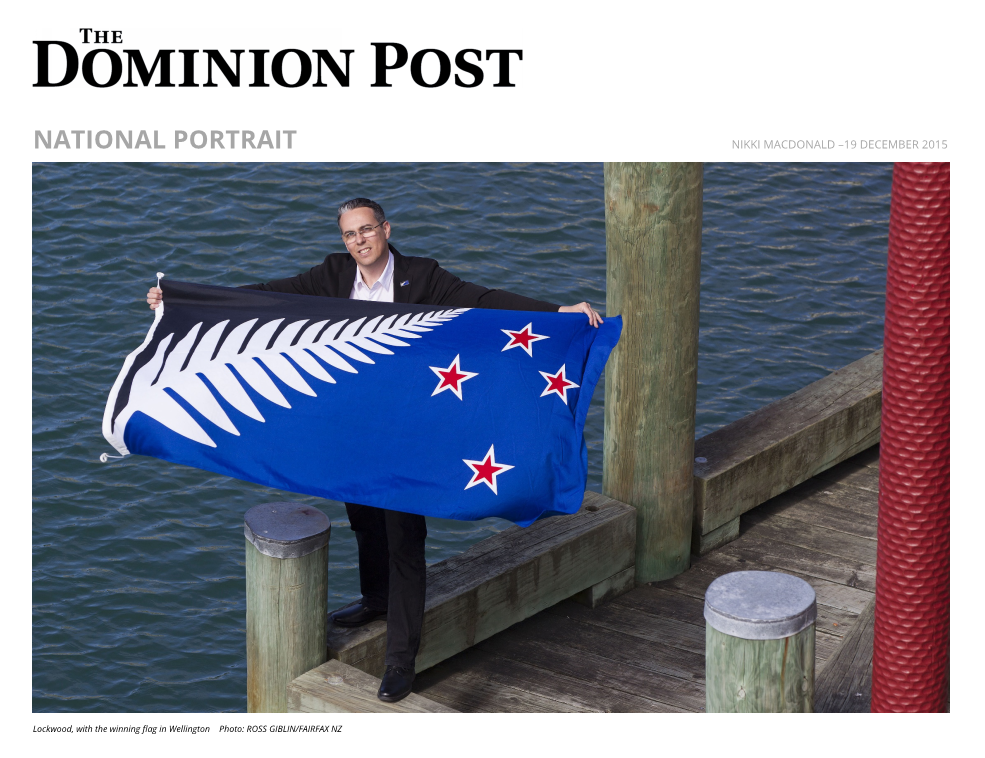
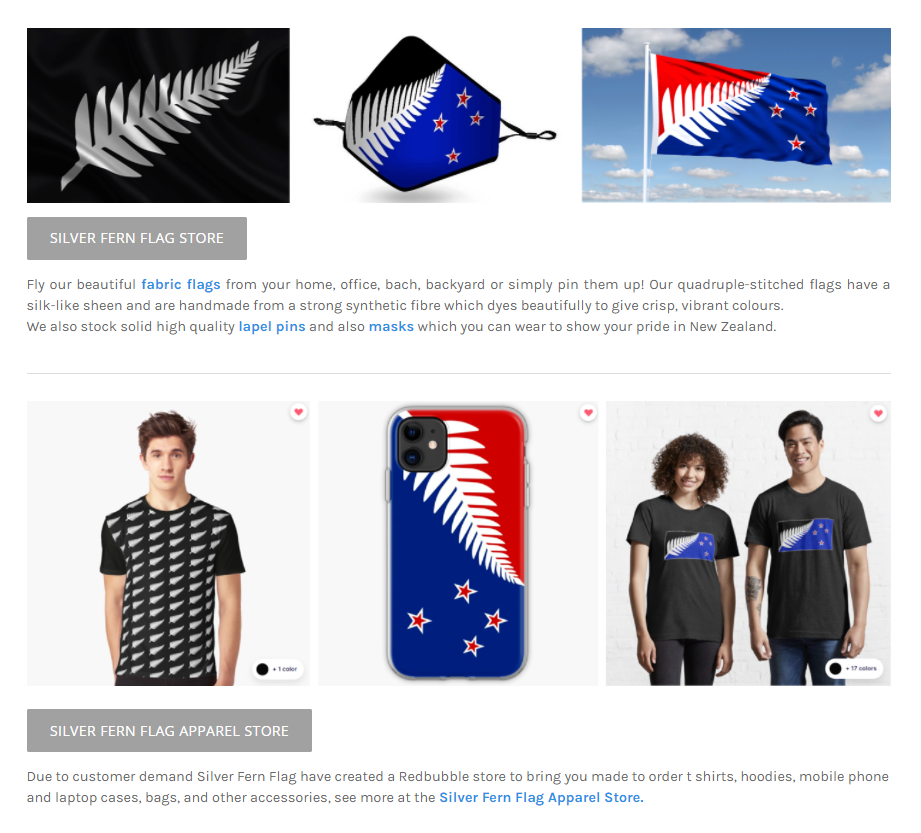

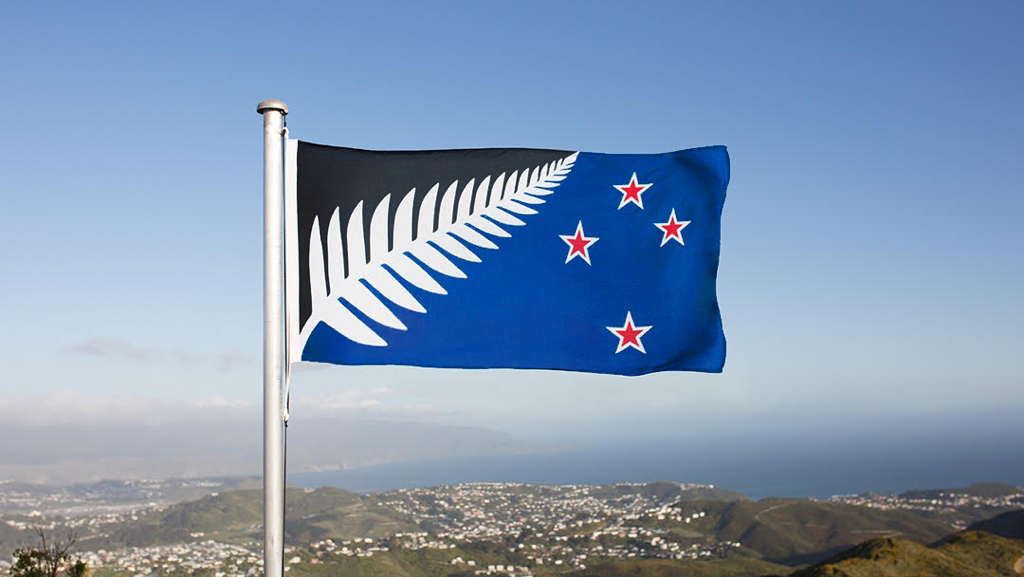
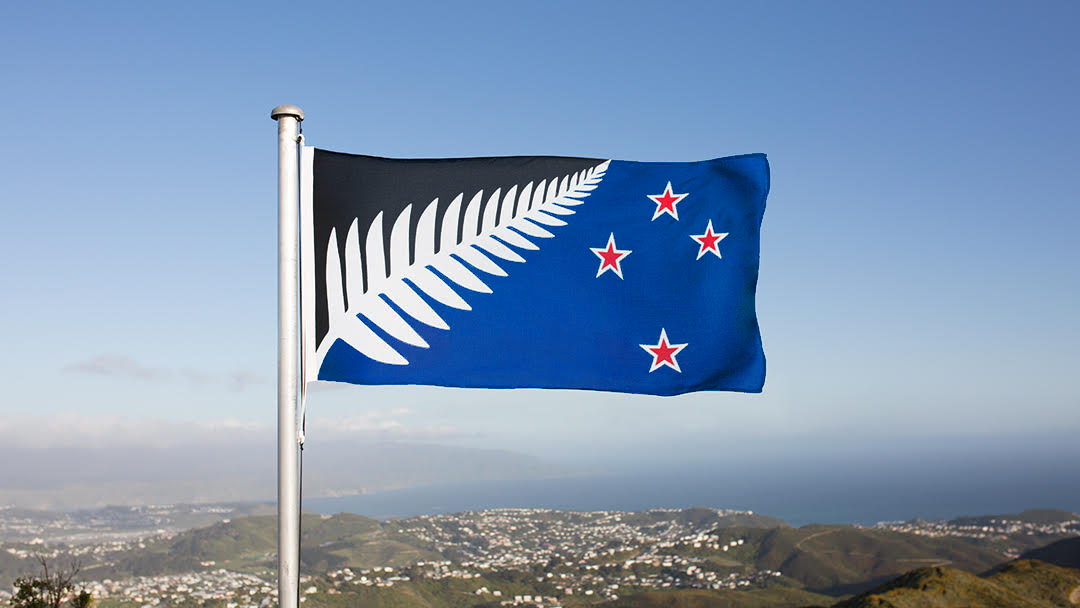
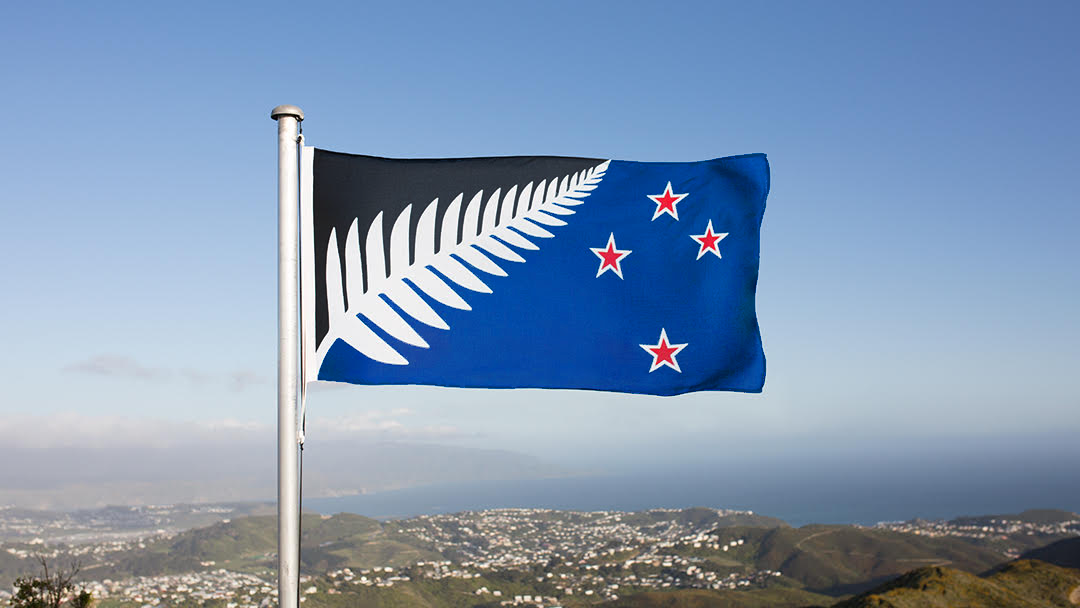
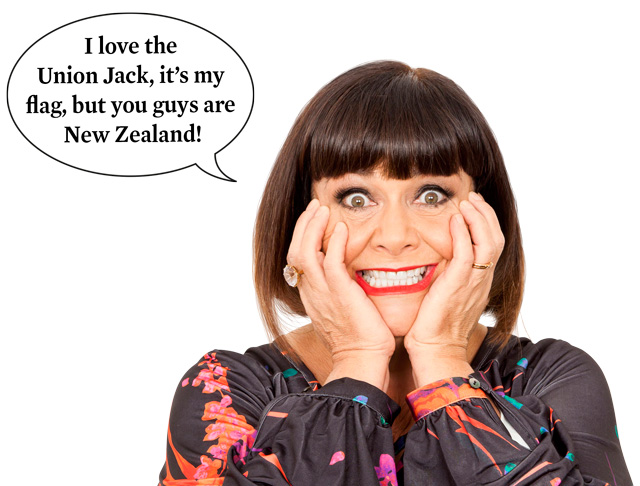

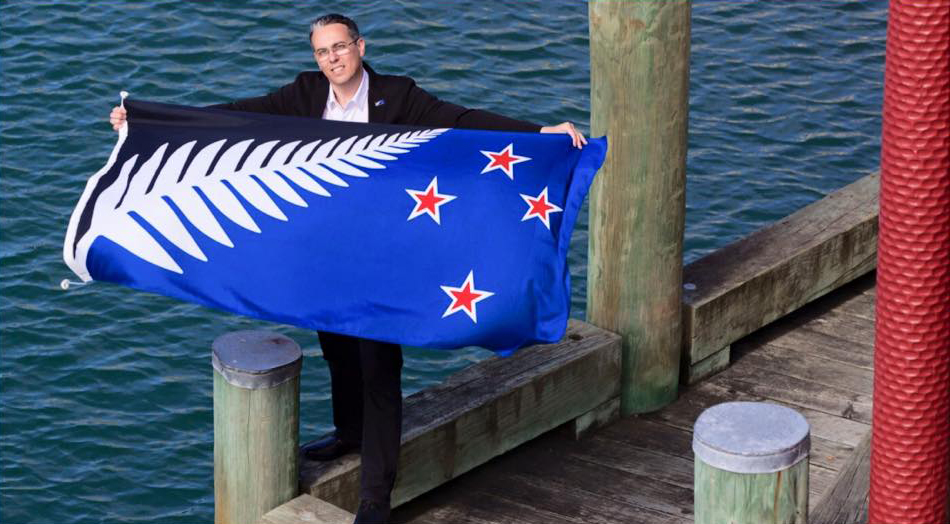

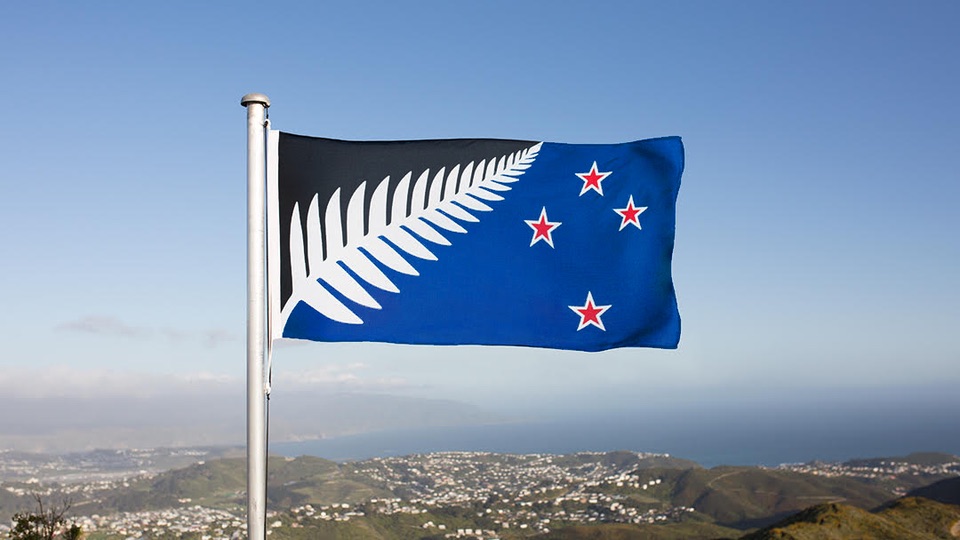
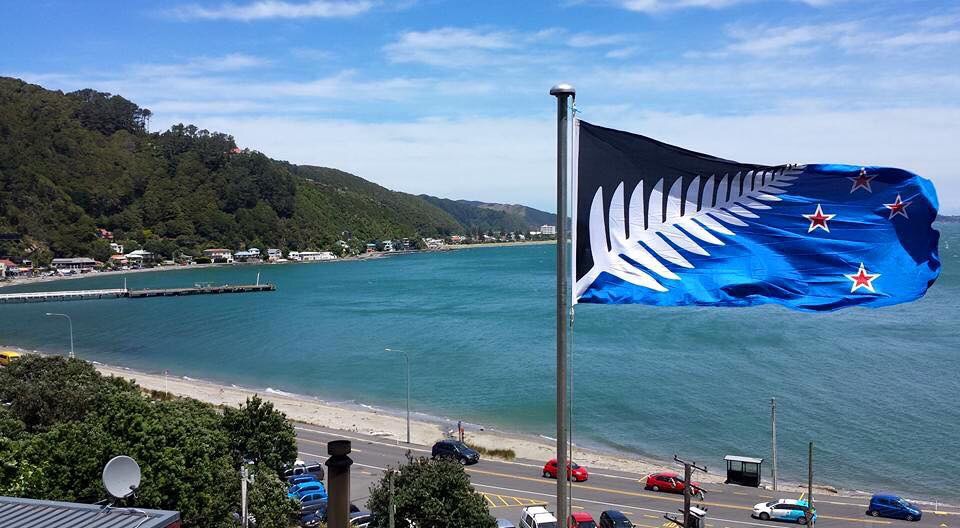
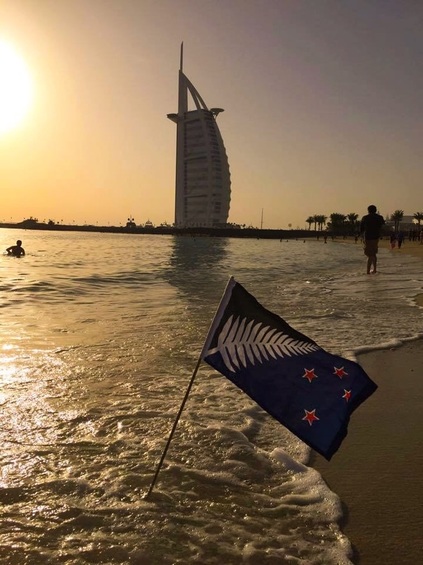
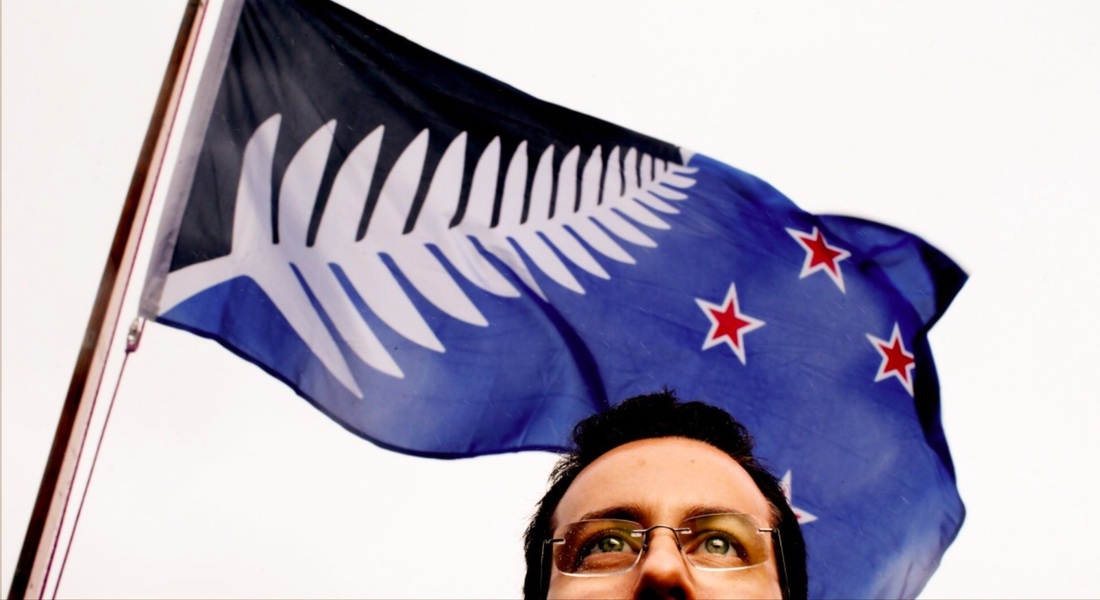
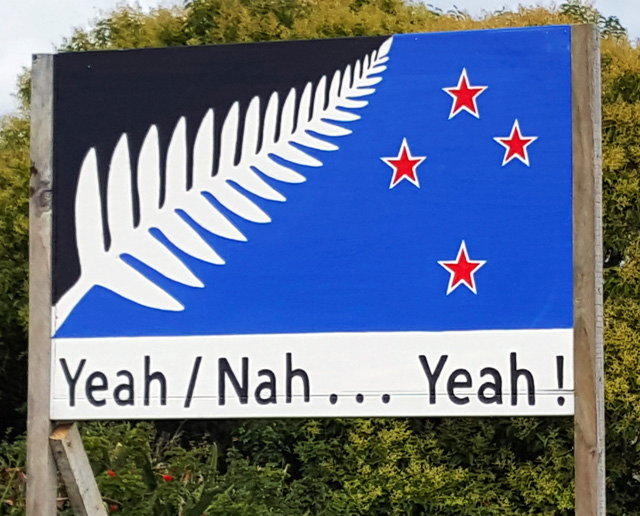

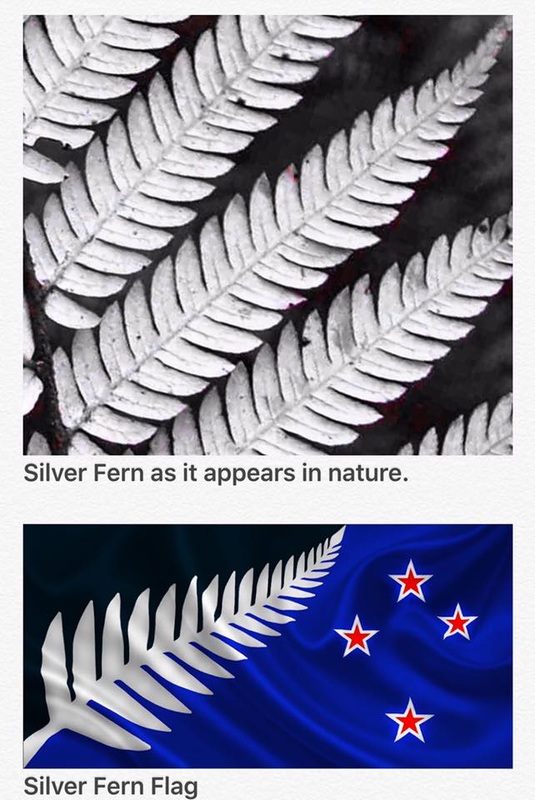
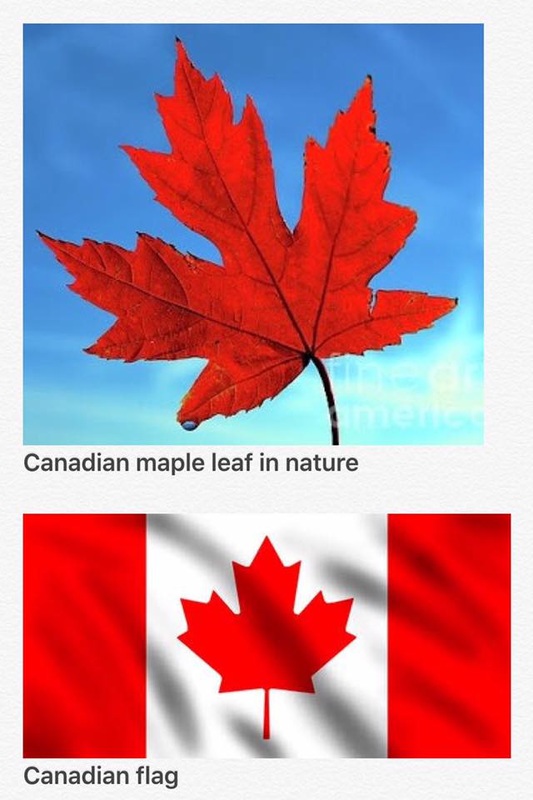
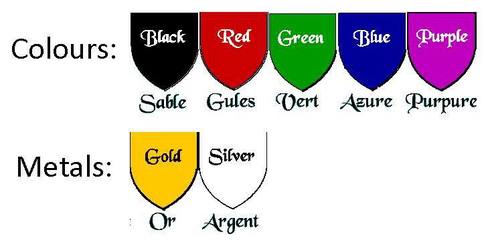

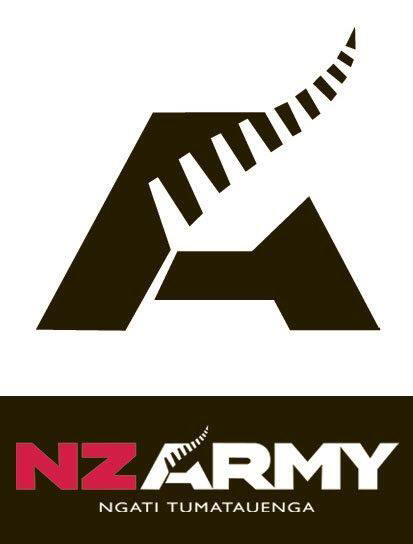
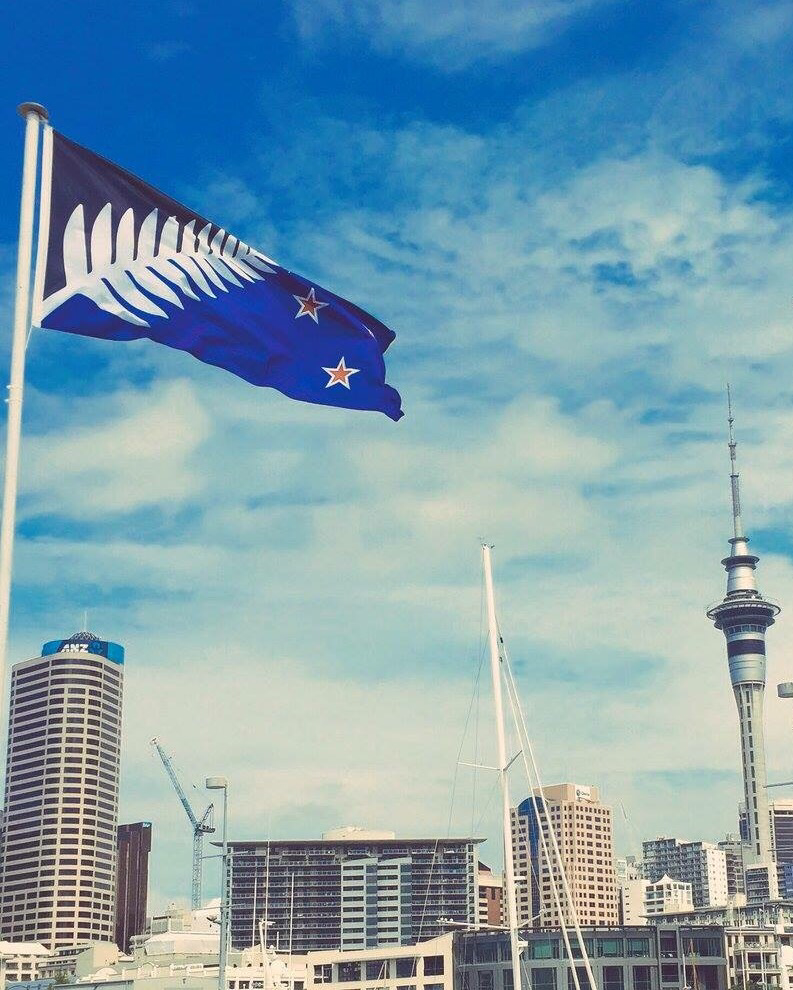
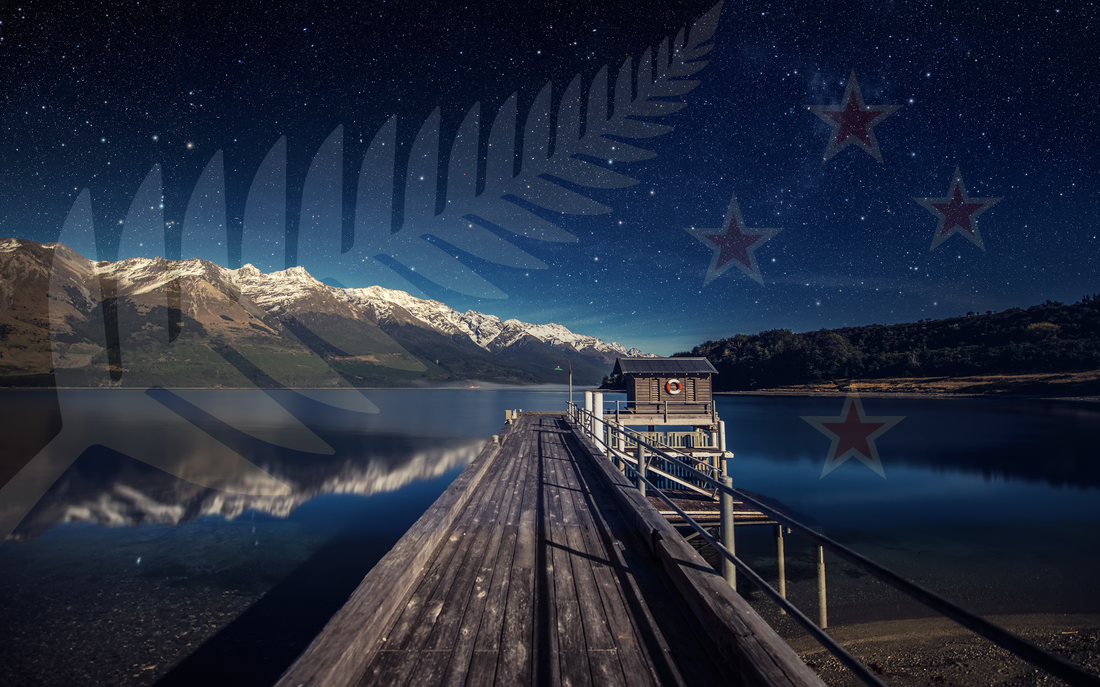
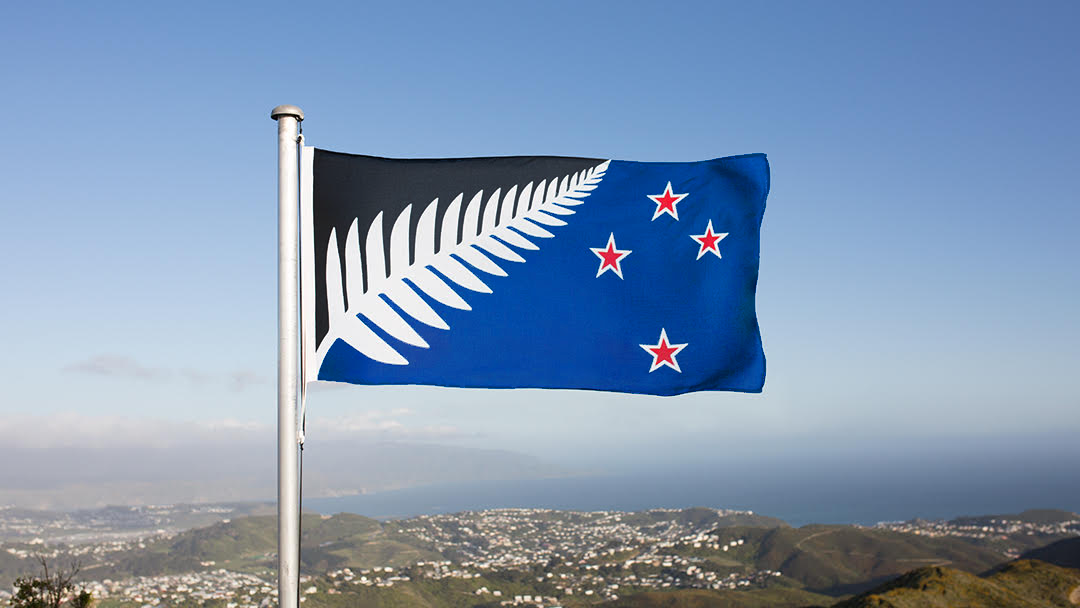
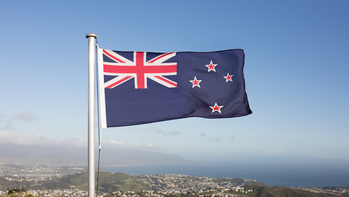

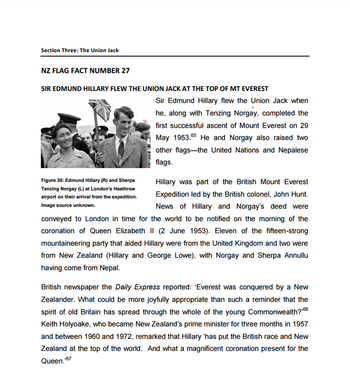
 RSS Feed
RSS Feed
